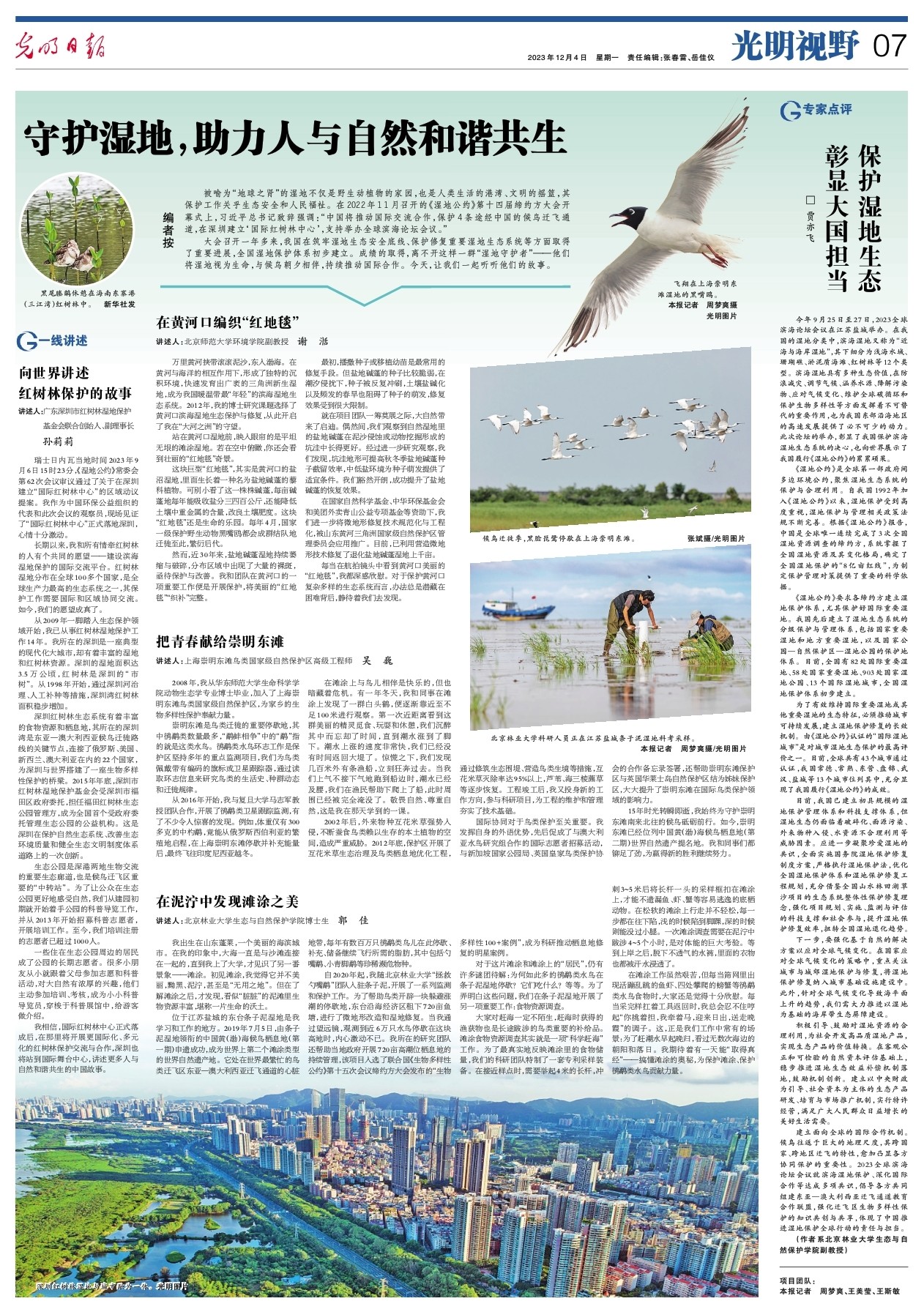Latest news
Renowned as the "kidney of the earth," wetlands serve not only as a habitat for wild fauna and flora, but also as a sanctuary for human life and the cradle of civilization. Therefore, their conservation is closely linked to ecological security and the well-being of people. During the Opening Ceremony of the 14th Meeting of the Conference of the Contracting Parties to the Ramsar Convention on Wetlands in November 2022, Xi Jinping emphasized that China will promote international collaboration to safeguard the four bird migratory routes passing through China, establish an International Mangrove Center in Shenzhen, and support the hosting of the World Coastal Forum.

Over a year following the Congress, China has made significant strides in establishing a robust security framework for wetland ecological safety and safeguarding and rehabilitating vital wetland ecosystems. A preliminary national wetland protection system has been established. These accomplishments would not have been possible without a dedicated group of "wetland guardians" who esteem wetlands as their life's work, collaborate tirelessly with migratory birds, and persistently advocate for international cooperation. Guo Jia, PhD student of the College of Ecology and Nature Conservation, Beijing Forestry University, is one of them.
Below is an account in Guo Jia's own words.
Discover the beauty of tidal flats in the muddy fields
在泥泞中发现滩涂之美
I was born in Penglai, a picturesque coastal city located in Shandong Province. In my recollection, the sea has always been associated with the beach. However, this perception changed when I embarked on my college journey and encountered a different scenery - tidal flats. Prior to gaining knowledge about them, I was unaware that these seemingly "dirty" mudflats are actually abundant in biological resources and can be considered as a fertile breeding ground for life.
I have been studying and working in the Dongtai Tiaozini Wetlands in Yancheng, Jiangsu Province. On July 5, 2019, the Chinese Yellow Sea(Bohai Sea) Migratory Bird Habitat (Phase I), spearheaded by Tiaozini Wetland, was successfully inscribed as World Natural Heritage, becoming the second tidal flat type of World Natural Heritage globally. Located in the heart of the world's busiest bird migration zone, the East Asia-Australasia migration corridor is the busiest bird migratory pathway worldwide. Annually, millions of shorebirds such as plovers and sandpipers utilize this area as a crucial stopover to rest, replenish energy reserves, and store fat for their subsequent flights. Notably, spoon-billed sandpipers and little green feet sandpipers are among the diverse range of shorebird species that frequent this site, both of which are classified as rare and endangered.
Since 2020, I have joined the "Rescue Spoon-billed Sandpiper team of Beijing Forestry University to go to Tiaozini Wetlands and carry out a series of monitoring and protection work. In order to help the birds create a resting place from the high tide, the Dongtai Coastal Economic Zone leased 720 acres of fish ponds and carried out some transformation and restoration. I was thrilled when I looked through my telescope and saw nearly 60,000 waterbirds resting on this high ground. My research team also helped the local government to carry out sustainable management of 720 acres of high-water habitat, which was included in the "Biodiversity 100+ Cases" issued by COP15 to the Convention on Biological Diversity, becoming a star case of scientific research promoting habitat restoration.
There are still many mysteries about this tidal flats and its inhabitants: Why do so many waterfowls stop in here and what do they eat? In order to answer these questions, we carried out another important work in sliver wetlands: food resource survey. We are no strangers to "catching up with the sea"-- gather seafood on the beach when the tide is ebbing, and those seafood is also an important supply for birds traveling long distances. In fact, the investigation of food resource in tidal flats is a work of "catching up with the sea in a scientific way". We have to catch benthic animals such as fish, shrimp, crabs, which are easy to escape, in the soft mudflat, and a survey requires us to trek in the mud for 4 to 5 hours, which is a huge test of physical fitness, and our clothes inside are soaked with sweat.
Although working in the tidal flats is arduous, we still feel very pleased when seeing those living fish, shrimp, crabs and other wader water bird food in the mesh. I'm looking forward to figuring out the mystery of mudflat so as to protect the them and those lovely water bird.From Guangming Daily










